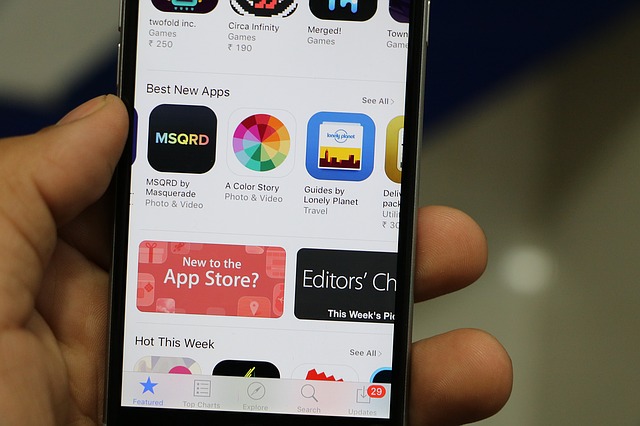We have over 2.7 billion smartphone users worldwide. This means that the mobile app business industry is thriving.
It is no surprise then, that smartphone penetration continues to grow and the app business industry is still gaining momentum at a steady pace, without showing any signs of a slowdown.
ComScore’s global mobile report in 2018 found that apps account for over 80 percent of mobile time. Flurry Analytics conducted a study that further strengthened the resolve of the mobile and app industry by showing that mobile app usage would grow by 6 percent year on year.
The app market seems to appeal to Millennials much more than any other generation, with 21 percent of millennials opening an app 50+ times a day!
Numbers seem to be in favor of mobile apps with 57 percent of all digital media usage coming from mobile apps (Buildfire, 2019). As of 2019, there were over 2 million apps available for download on Google Play Store. The Apple App Store had 1.83 million apps available for download.
Couple that with the fact that app usage and smartphone penetration are still growing at a steady rate, without any signs of slowing down in the foreseeable future.
We have over 2.7 billion smartphone users across the world (Statista, 2019), spending 90 percent of their mobile minutes on apps (ComScore, 2018). Of the total number of apps, 96 percent were free apps! (Statista, 2019).
Considering this huge marketplace, and the highly competitive atmosphere, it is important to know how to market your app business.
Before we dive deeper, let us look at some important statistics. As per Statista (2019), mobile apps are expected to generate $581.9 billion in revenue by the year 2020.
According to a region-specific revenue, in 2022, consumers in the USA are projected to spend over $34 billion on mobile apps via app stores.
Global mobile application revenues are projected to generate a revenue of $188.9 billion via app stores and in-app advertising.
Before you start work on your mobile app development, ask yourself these important questions.
- Why would users need your app?
- What would you need to do to make it work?
- Who is your audience?
- What is the best way to develop the said mobile app?
While you are on the task of creating your app business, do remember that each mobile app is different and app trends and technologies are always changing and evolving.
Let’s take a look at what it takes to build an app business and how you should go about it.
Step 1 – The Idea
 Just like any other business, the app business starts with one big business idea’. However, do make sure to back it up with substantial marketing efforts and good partners.
Just like any other business, the app business starts with one big business idea’. However, do make sure to back it up with substantial marketing efforts and good partners.
Even the best app business idea, may not really take off well due to a lack of good marketing efforts, or a lack of good business partners.
If you have multiple app business ideas, then don’t limit yourself.
Give each app a couple of months to gain traction in the market, and if you don’t see your user base growing by then, then move to the next app idea.
With each app business idea, put it down on paper as clearly as possible. Check to see if there are other apps with a similar idea and how you can be different.
With the help of prototyping tools, chart out each and every page of your app – like a wireframe.
Step 2 – App Business Research
With the sheer number of apps being launched daily, it is important to stay updated about what is happening.
You may think that you have a one-of-a-kind app business idea – but you still need to check if there is anybody else in the market who has already come up with the same.
This will help you understand your competition and study why their app is successful or unsuccessful. You can then apply these learnings to your own app business.
Along with this, you can study forums where questions are being asked. One of the most reliable forums is Quora. With the help of Google Keyword Planner, you can understand what people are searching for and the volume of such searches.
Attend business networking meets and start-up talks. You can also conduct surveys and polls via Twitter, Facebook, or Google Forms.
Step 3 – App Category
Apps are generally classified into three categories – Native, hybrid and web-based apps. A native app is one that’s built to be used only on a specific platform such as iOS or Android.
These apps are usually of premium quality and have higher performance, graphics, a better user-interface, and the like.
A hybrid app is a mix of native apps and web-based apps. These are developed using a popular framework like Xamarin or React Native. A web-based app is once that is coded with HTML, CSS, and JavaScript.
Step 4 – Choose an App Provider
With big stakes involved in app development today, it can be confusing to go about choosing an app development company.
For many developers, apps are their babies, and it is important to choose the right mobile applications development companies that can develop your idea and make sure they create the best product for it.
It is key that one doesn’t get taken for a ride by a company that might over-charge you or worse, even steal your intellectual property and misuse it. But other than just avoiding misuse or being cheated, there are multiple other factors to consider when partnering with an app development company.
There are multiple aspects to work on – budget, technical issues, user requirements, etc. And these need to be dealt with seamlessly and effectively by sticking to the mandated deadlines. Over-running deadlines can mean extra strain on your financial and technical resources.
Similarly, there are multiple people and teams which need to be on the same page about the ideas for the app, the timelines for making it, and ensuring the end product is exactly as envisioned when the project was first started.
A good communication system is a key to ensuring these problems are nipped in the bud.
Step 5 – A/B Testing
This is a basic test strategy applied by many app developers. The idea is to test every element of the app, in order to understand what works smoothly, what doesn’t, if any additions are needed, and if any elements were causing hurdles and are better eliminated.
A/B testing involves experiments to pit elements against one another and to measure which one drives more downloads, more engagements, more shares, more sales, and so on.
Testing, experimentation, and optimization is a never-ending process. It’s a good practice and only ensures that you have a top-notch app running which users will appreciate.
As technology is evolving daily, developers keep adding new features and updating the app to remove bugs. Redesigning the app also helps to keep users interested and curious to find out what’s new.
Step 6 – Pricing
It becomes very important to choose an app provider that not only fits your budget but also provides maximum service for the same. App development is no small task, and one needs to realize that even a small mistake can turn out to be a very expensive affair.
Every company has a different app development price depending on the services they offer. Choose the best that suits your app the best, and not necessarily the cheapest or the priciest.
Step 7 – Design
To have an edge over competitors, you have got to have an appealing visual language. High resolution, well-designed graphics, and animations are synonymous with great visual appeal.
The Android framework provides a set of powerful APIs for applying animation to UI elements. You will also need to ensure that your design is responsive to the different operating systems out there – Apple, Android, and Microsoft.
Step 8 – GDPR Compliance
GDPR stands for General Data Protection Regulation. It’s the core of Europe’s digital privacy legislation. This legislation came into force on May 25th, 2018.
The GDPR applies to any organization within the European Union and those organizations outside of the EU which sell goods and services to customers or businesses in the EU.
The GDPR requires these organizations to make sure that customers’ personal data is protected and Is gathered legally. As a mobile app publisher, you may need to understand how you obtain, store, or handle users’ sensitive data.
While complying with the GDPR may not give you rich customer insights, the upside is that you will have gained customers’ trust and will reduce your compliance risk.
Overall, it is a fairly manageable situation. Besides, the fines for not being GDPR compliant are quite high! It is either 4 percent of the annual turnover of €20 million, whichever is greater!
Step 9 – Marketing
 All social media platforms have an option to run ads that show app installs as a call-to-action button. Make sure to make use of that feature.
All social media platforms have an option to run ads that show app installs as a call-to-action button. Make sure to make use of that feature.
Sponsored posts on social media are an effective way to market your app as well.
If your app is one that is needed by a section of people on the internet, chances are they are searching for it on Google.
All you have to do is ensure that you meet them there. Create a website about your company and app business. Remember to use the right keywords in your content on your site.
Step 10 – Track KPIs
Key Performance Indicators measure a company’s success against a set of targets or goals. KPIs can be financial (measuring net profit or revenues) or anecdotal (measuring traffic in a store, repeat customers or customer experience among many other factors).
KPIs are integral to forming good marketing strategies. They provide an in-depth look into the performance of your company and how the buyer or customer is interacting with the same.
KPIs indicate what is working for you and what isn’t. If you know what you want to measure you can set up analytics ahead of time and ensure tracking from day 1.
Make it a habit to check and review the most important metrics on a regular and frequent basis. This not only helps you understand your business well but it also helps you stop any significant losses from happening before it’s too late.
Here are the top KPIs you should be tracking – Click-through rate, cost per click, quality score.
Step 11 – App Store Optimization
You must optimize your app to rank higher in the app store.
The App Store listing requires a host of things – your app name which can have a maximum of 50 characters, app description which can have a maximum of 4000 characters, a high-resolution app icon, and an app review video amongst other things.
You may want to take the time to create unique and expressive app descriptions, that convey in a clear and precise manner, what the app is about and explains all its various features.
Investing time and effort here is well worth it. This will improve your ranking and thus the app’s visibility.
Harikrishna Kundariya, a marketer, developer, IoT, ChatBot & Blockchain savvy, designer, co-founder, Director of eSparkBiz Technologies, A Mobile App Development Company. His 8+ experience enables him to provide digital solutions to new start-ups based on IoT and ChatBot.
